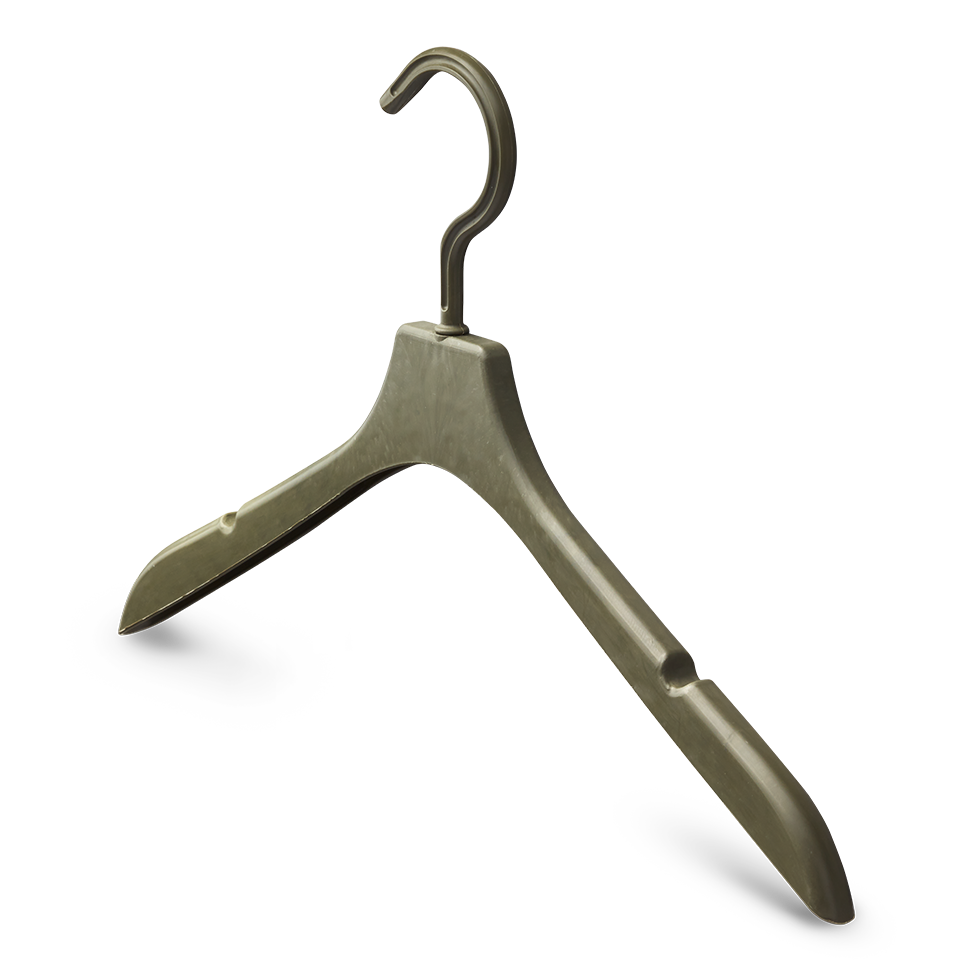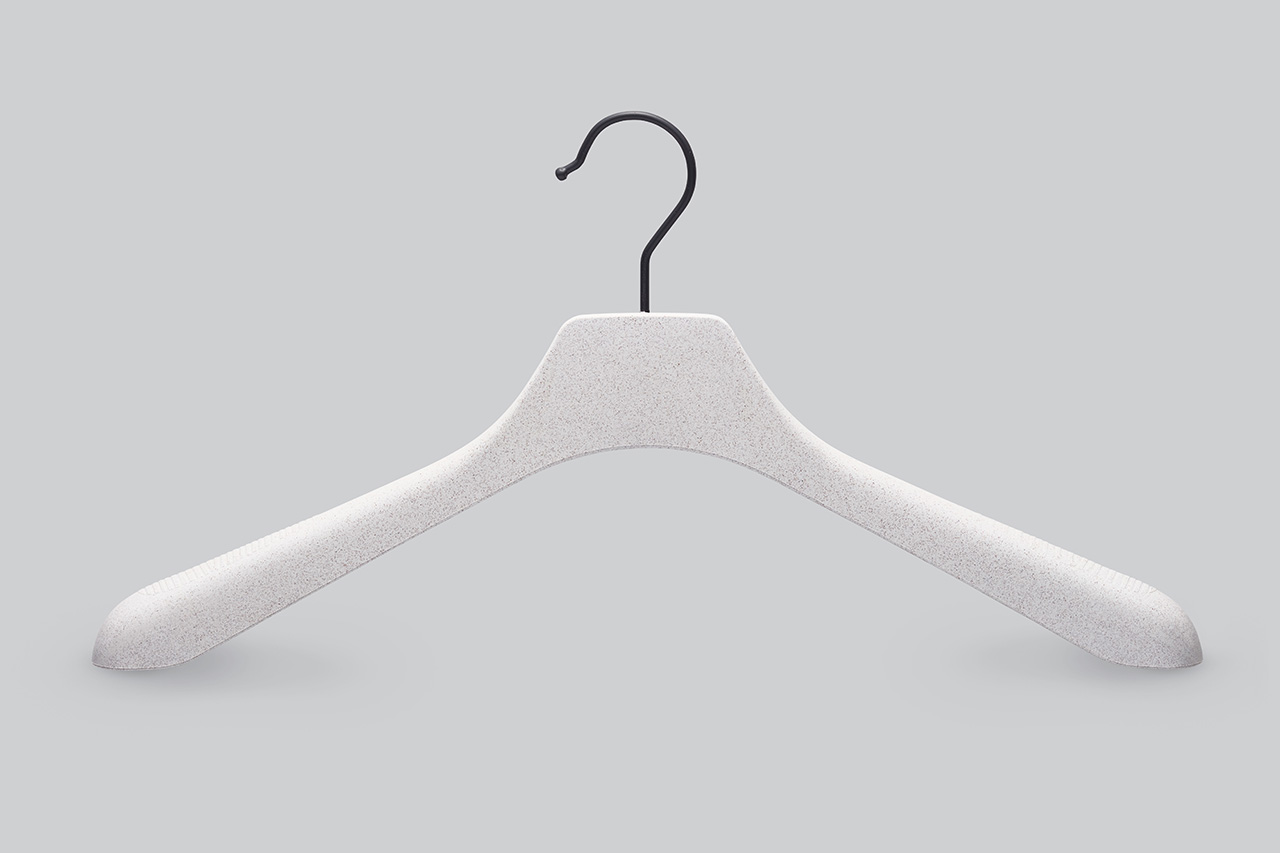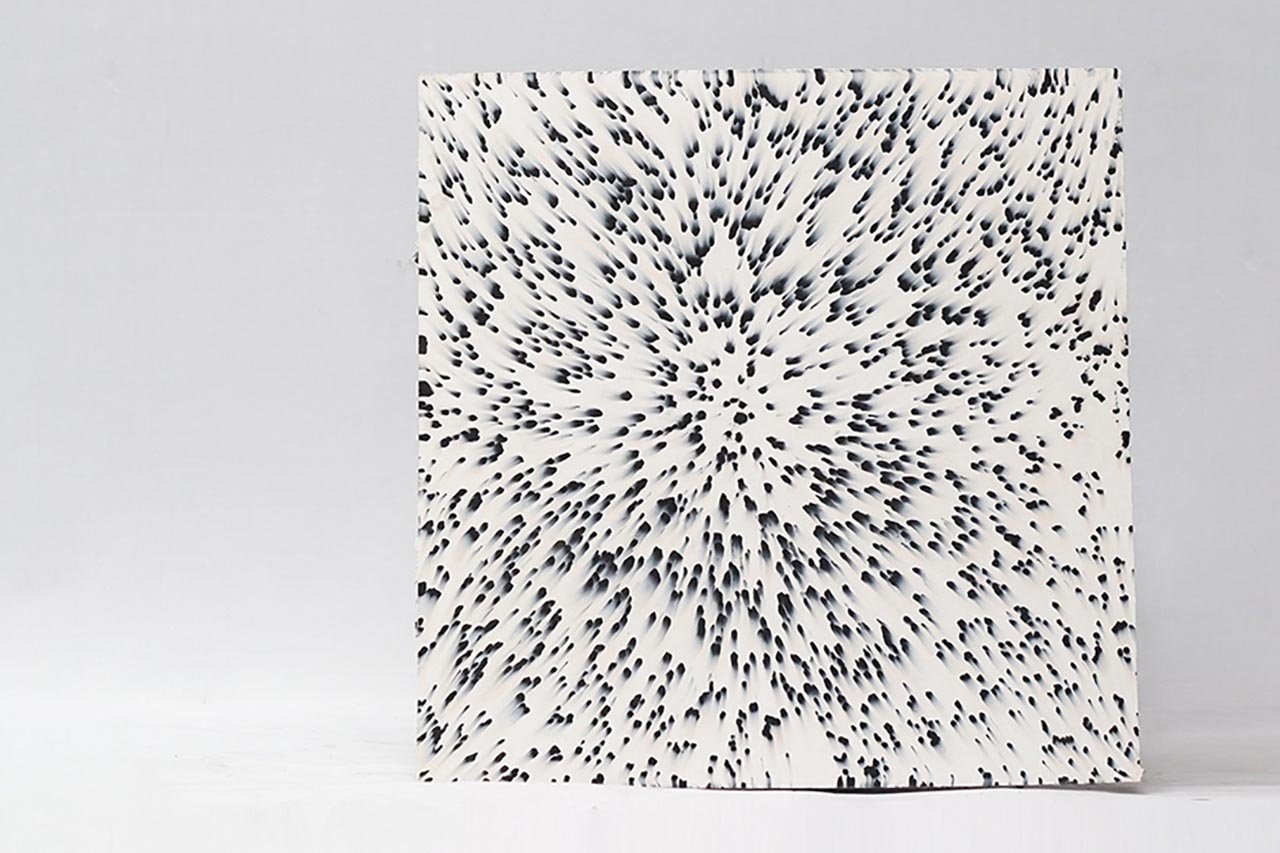SMART CHOICES,
BUILT FOR
EVERY DESIGN.
Every project starts with different needs, priorities and ambitions. We help you navigate material options, construction methods and logistics so you can make informed choices that fit your brand and your budget. Our approach is practical, transparent and focused on finding solutions that work.
Bio-Based
Hanger
Our Bio hangers are made of a combination of Bio based materials with PLA* and therefore it is 100% BIO BASED and biodegradable. The entire lifecycle: production, use and processing of the hanger is CO2 NEUTRAL. For this reason, there is no use of virgin fossil fuels. Click below to see all the options, materials, specifications and certifications.

FSC Wood
Certification
Fully handmade with specially selected high-quality wood such as teak, walnut, beech, or oak wood, which gives them a robust and natural look while keeping your clothes in the perfect shape.
Recycled Plastics

Hangers
Recycled plastic hangers made with injection molding. Customize every part of the hanger: choose the color, the shape, the texture (with or without fibers) and customize your hook. We can make hangers to match your brand identity using less virgin fossil fuels.

Sheet material
